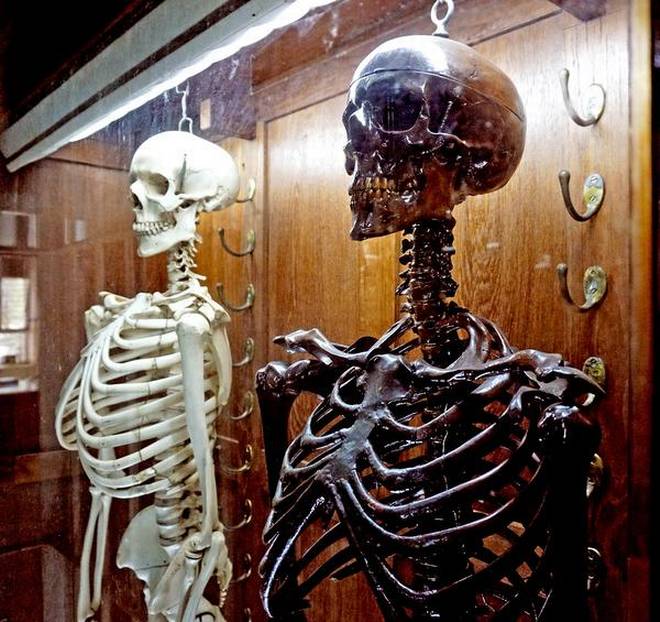
A rare masterpiece from Saraswati Mahal of Thanjavur, it’s now the prized possession of the Anatomy Museum of Andhra Medical College
A rare ivory skeleton, the bones of which have been carved to clockwork precision on the lines of the human skeleton, is the cherished treasure at the Anatomy Museum of Andhra Medical College (AMC) here.
The ivory skeleton, 5’6” in height and weighing 231 lbs (104.78 kg), reflects the ingenuity of the sculptor, who had carved it more than two centuries ago. It was procured from the famous Saraswati Mahal of Thanjavur, which was under the patronage of Rajah Serfoji (1798-1832). The skeleton is said to have been made between 1805 and 1810. Dr. R. Krishna Rau, a Professor in the Department of Anatomy between 1929 and 1946, who was instrumental in setting up the museum, had bought the ivory skeleton and a rosewood skeleton for a sum of ₹75. The 18th century skeleton has been drawing appreciation of not only experts in the medical field, but also the general public during exhibitions.
“The British are said to have paid ₹5 lakh to display it during an exhibition in London in 1970. The skeleton was taken in a specially made coffin and returned after about a week,” Dr. Ashalatha, Head of the Department of Anatomy, told The Hindu.
Mortem and taboo
“In those days, there were several taboos in handling human bodies and skeletons, and Dr. Krishna Rau was said to have stayed back in the department for a few days on the arrival of the skeletons. Even today, some anatomy professors do not tell their family members that they handle dead bodies,” says Dr. K. Lakshmi Kumari, an Associate Professor of Anatomy. “The ivory skeleton is a masterpiece and is said to be one among the few in the world. No wonder, it was taken by ship all the way to London for display at an exhibition there. The ivory and rosewood skeletons are displayed at exhibitions, organised on special occasions,” says Dr. P.V. Sudhakar, Principal of AMC.
The museum signifies the efforts and dedication of the illustrious teachers, professors and HODs, particularly of AMC during the early days.
Prof. F.J. Anderson, who as Principal of AMC, gave full freedom to Dr. Krishna Rau in securing the unique collections.
The department was named after Dr. Krishna Rau on January 24, 1984 honouring his efforts.
source: http://www.thehindu.com / The Hindu / Home> News> States> Andhra Pradesh / by B. Madhu Gopal / Visakhapatnam – April 06th, 2018